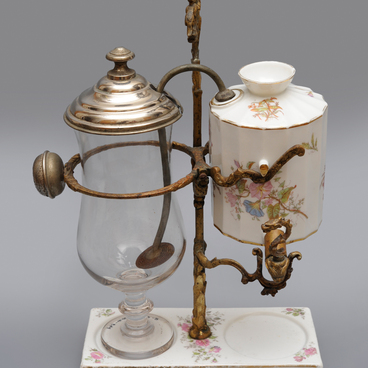Fresh flowers can be considered the best interior decoration. The museum features an exhibit that invariably piques the interest of visitors and sparks a variety of speculations about its purpose. Among these, the most popular theories are that it is “a cradle for a baby” and “a yarn box.” However, this is actually a jardinière, which in French means “gardener.” This type of furniture is a stand or console on which, in place of a countertop, stands a container for flowers, typically in the form of a basket or drawer. Jardinières originated in France at the turn of the 18th century. Therefore, a jardinière can be described as an artistically crafted basket, drawer, table, bookcase, or stand for potted indoor plants.
Soil was placed into the box of a jardinière or pots of flowers were placed inside it. Jardinières were very popular among wealthy people in the 18th and 19th centuries. They could be found in both residential and specially designed rooms, such as orangeries. The appearance of orangeries in Russia in the mid-19th century was associated with a fashion for growing exotic plants, including fruits that were served during feasts. Jardinières could be of different shapes and sizes, made from various materials, such as wood, wicker, metal, and stone. However, for practicality and durability, wicker or combined jardinières were most commonly used.
Wicker jardinières were made from willow branches, reeds, bamboo, straw, or cattails. Willow stands were the lightest, most durable, and cheapest, as willow branches tolerate moisture. Combined planters could include metal, wood, glass, and stone parts.
Flowers were loved in the Stoletov household. According to recollections of different family members, fragrant African violets adorned windowsills, which explains the presence of a jardinière in the exhibition.
The museum features a bamboo, oval-shaped jardinière with tall sides. It has a base in the form of a pedestal and four supports that radiate upwards from the center of the pedestal. The supports are connected by four legs that have protrusions for attaching them and metal tips at their ends.


